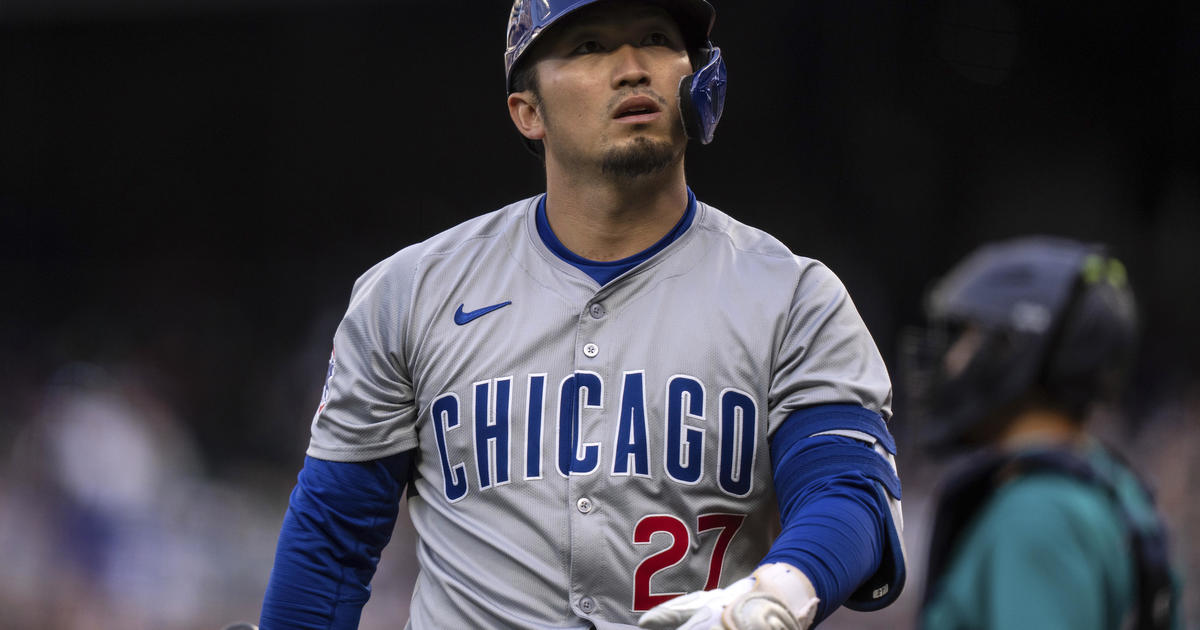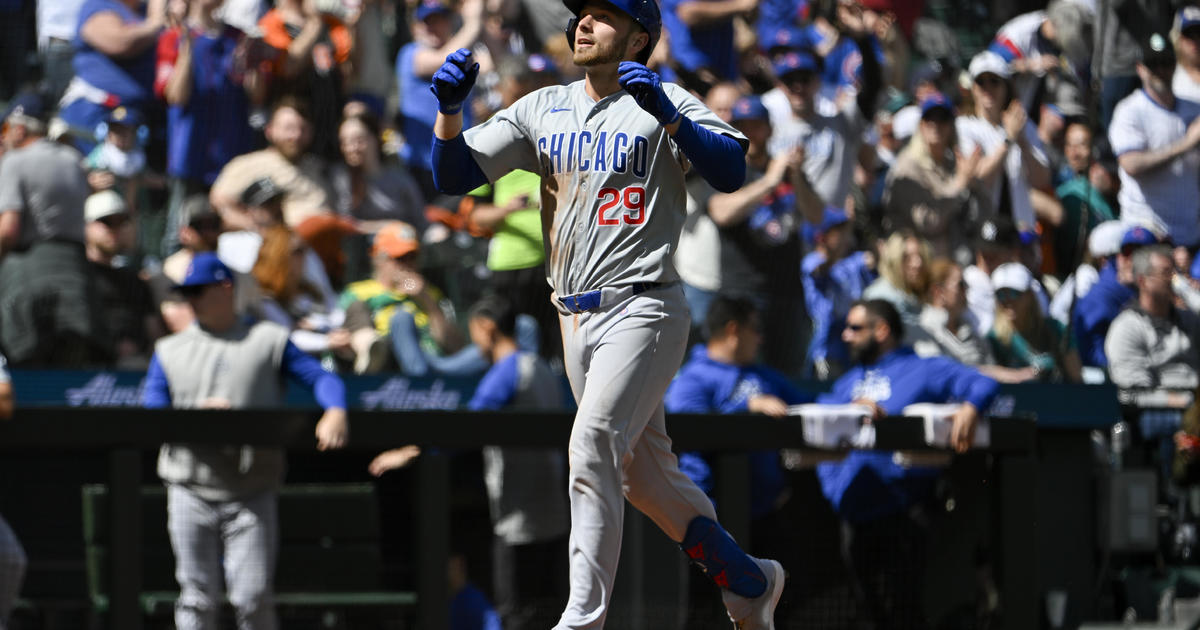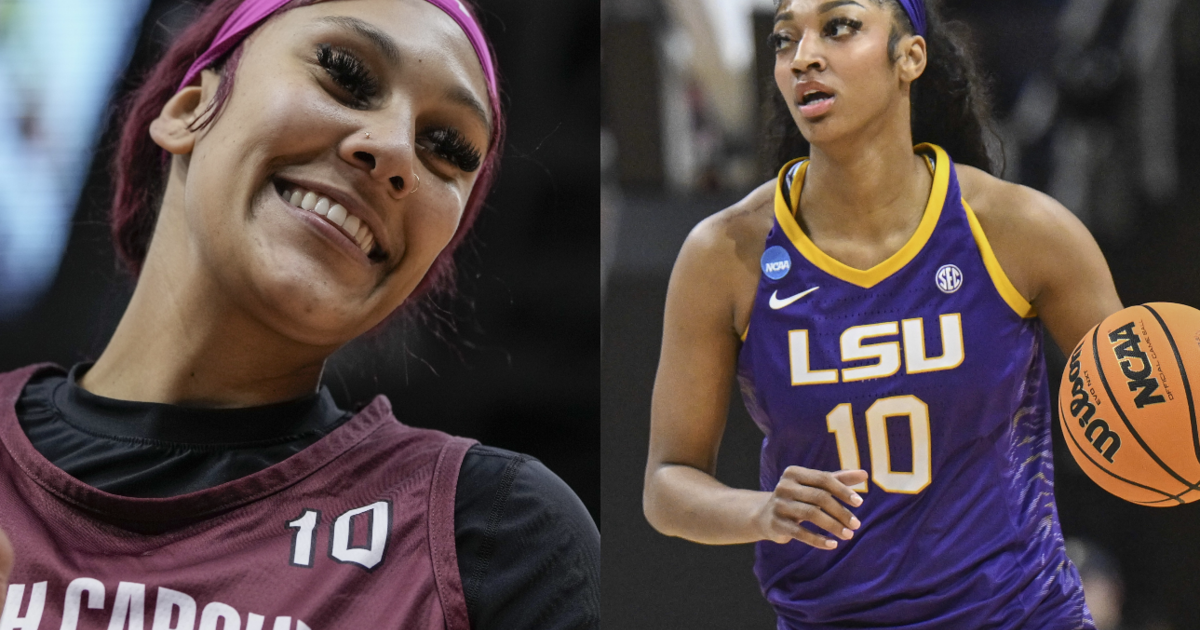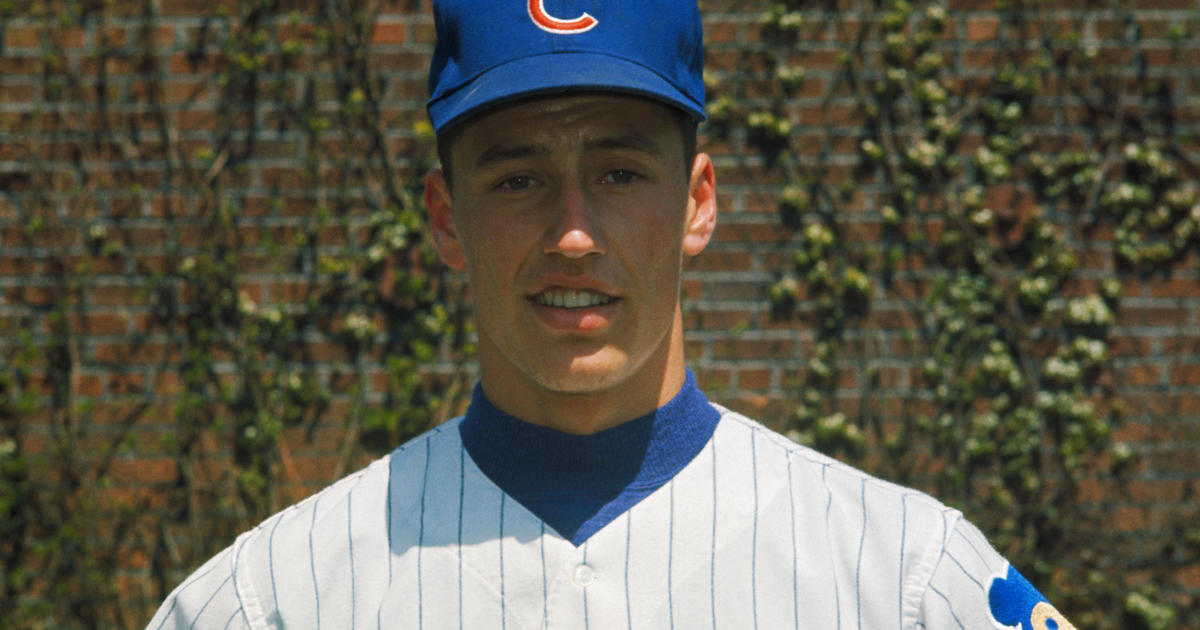Lindholm: Anthony Rizzo's Path To A Higher Batting Average
By Scott Lindholm-
(CBS) As the Cubs enter 2014, they could be on the precipice of sustained success if efforts by Theo Epstein and Jed Hoyer to shore up the farm system, expand international signings and play smarter baseball on the field begin to bear fruit. Much has to go right in order for their plans to work, but a big part of that success rests on the shoulders of first baseman Anthony Rizzo.
At 24 and with only two full seasons under his belt, it's too soon to make definitive pronouncements regarding his future. The Cubs already believe he'll be a cornerstone, signing him to a generous contract last year. In 2013, Rizzo hit 23 home runs and drove in around 15 percent of the base runners, right around the major league average. His problem appeared to be his batting average, which at .233 was among the worst in the majors. A closer look at some of his peripheral numbers suggests this can rise.
One telling statistic is batting average on balls in play (BABIP). This is the formula:
(Hits - Home runs)/(At bats - strikeouts - home runs + sacrifice flies)
This formula shows what a player did when he actually put the bat on the ball, eliminating strikeouts and home runs. In 2013 the major league BABIP was .297, and these are the players with the lowest BABIP among the 140 players with enough plate appearances to qualify:
| Player | Tm | PA | BA | OBP | SLG | OPS | BABIP |
|---|---|---|---|---|---|---|---|
| Coco Crisp | Oakland | 584 | .261 | .335 | .444 | .779 | .258 |
| Anthony Rizzo | Chicago Cubs | 690 | .233 | .323 | .419 | .742 | .258 |
| Mike Moustakas | Kansas City | 514 | .233 | .287 | .364 | .651 | .257 |
| Mitch Moreland | Texas | 518 | .232 | .299 | .437 | .736 | .255 |
| Matt Dominguez | Houston | 589 | .241 | .286 | .403 | .690 | .254 |
| Edwin Encarnacion | Toronto | 621 | .272 | .370 | .534 | .904 | .247 |
| Andrelton Simmons | Atlanta | 658 | .248 | .296 | .396 | .692 | .247 |
| Matt Wieters | Baltimore | 579 | .235 | .287 | .417 | .704 | .247 |
| Dan Uggla | Atlanta | 537 | .179 | .309 | .362 | .671 | .225 |
| Darwin Barney | Chicago Cubs | 555 | .208 | .266 | .303 | .569 | .222 |
There is an element of luck in hitting -- sometimes a ball is hit well and manages to find the glove of a defensive player. If Rizzo could get his BABIP up to league average, this would be around 18 extra hits and push his average up to around .260. What follows explains how this could occur.
This chart shows Rizzo's hitting by batted ball type:
| MLB | PA | AB | H | 2B | 3B | HR | BA | OBP | SLG | OPS | BABIP |
|---|---|---|---|---|---|---|---|---|---|---|---|
| Ground Balls | 58389 | 58388 | 14019 | 1030 | 59 | .240 | .240 | .260 | .500 | .240 | |
| Fly Balls | 40296 | 39328 | 7141 | 1803 | 273 | 3678 | .182 | .177 | .522 | .699 | .095 |
| Line Drives | 30545 | 30294 | 20404 | 5386 | 440 | 983 | .674 | .668 | .978 | 1.646 | .657 |
| Bunts | 2733 | 1350 | 528 | 3 | .391 | .391 | .393 | .784 | .391 | ||
| Rizzo | PA | AB | H | 2B | 3B | HR | BA | OBP | SLG | OPS | BABIP |
| Ground Balls | 206 | 206 | 37 | 5 | .180 | .180 | .204 | .383 | .180 | ||
| Fly Balls | 159 | 157 | 34 | 7 | 2 | 18 | .217 | .214 | .631 | .844 | .113 |
| Line Drives | 115 | 115 | 70 | 28 | 5 | .609 | .609 | .983 | 1.591 | .591 | |
| Bunts | 1 | 1 | .000 | .000 | .000 | .000 | .000 |
Pay attention to the line drives, since line drives are hits around 70 percent of the time. The fact Rizzo hit significantly below that suggests room for improvement in 2014. In addition, in 2012, 24.4 percent of Rizzo's batted balls were line drives vs. only 19.6 percent in 2013 -- he hit fewer line drives with a lower average. Since 2002, the league average of line drives is around 20 percent of batted balls, so it's entirely possible the 2013 Rizzo is the true profile, but power hitters do tend to hit more line drives.
If he can hit more line drives at a higher average, good things can happen. Baseball Prospectus 2014 projects him with a .258 average, suggesting they might be seeing the same thing. There's an important caveat, of course. It's one thing to identify a place for improvement ("Hit more line drives!") and another to actually accomplish it. If players could hit line drives at will they would, and I'm not suggesting it's a simple or easy adjustment to make.
The opening for Score baseball expert Bruce Levine includes this quote from "Bull Durham":
"Do you know what the difference between hitting .250 and .300 is? That's 25 hits. Twenty-five hits in 500 at bats is 50 points."
Twenty to 25 more hits from Rizzo in 2013 would change the current discussion from a furrowed brow "2014 is a make-or-break year" to "Man, I knew he was going to work out!" With only 1,200 big league at-bats to date, the complete book on Rizzo has yet to be written, but he'll go far in 2014 toward filling in the blanks.
Playing in a hitter-friendly park like Wrigley Field assists Rizzo's power numbers, and if he can rebound from an underwhelming 2013, he'll go a long way in justifying his contract. Baseball Prospectus has him as the second-most likely player to improve in 2014 (behind only Atlanta's Freddie Freeman), so expectations are high. It is not hyperbole to state his production will be a large part of whether the Cubs achieve the success they believe they've set themselves up for in 2015 and beyond.
Follow Scott on Twitter @ScottLindholm.



